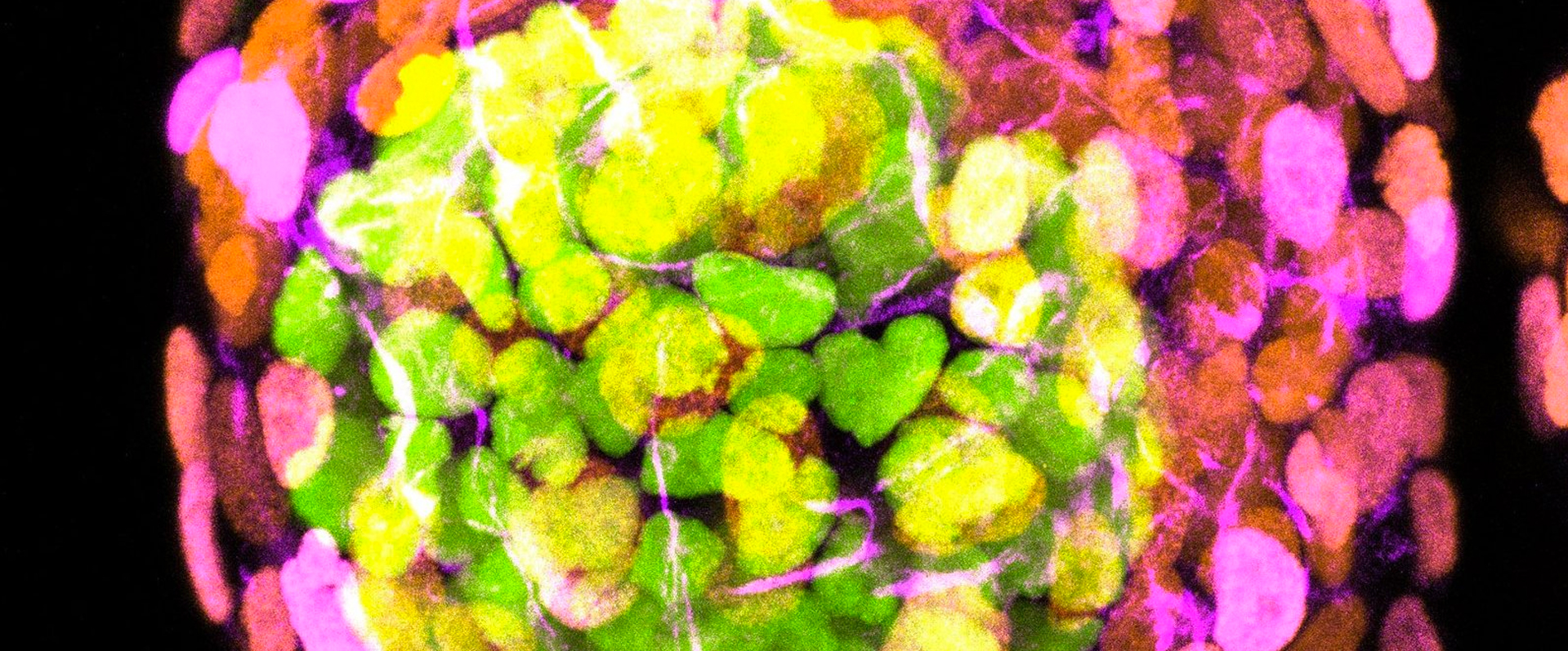The human body and all its complexity arise from just a small collection of cells that divide and morph into different types of tissues. But exactly how this occurs is hard to study because embryos are hidden inside their mothers. Some embryos are donated to science by individuals who have undergone in vitro fertilization, but these embryos are limited in availability and by strict ethical and legal regulations.
Consequently, scientists have turned to laboratory models to study the process: embryo-like models made from both mice and human stem cells, rather than eggs and sperm. Now, reporting in the journal Nature, Magdalena Zernicka-Goetz, Bren Professor of Biology and Biological Engineering at Caltech and TCCI-affiliated faculty member, has generated a human embryo–like model that mimics aspects of the second week of human development, a time after embryos become implanted in the womb.
These models are not living entities that can grow into actual embryos, but they may offer insights into how embryos develop, human defects and diseases, why some pregnancies fail, and they may even lead to new ways to develop synthetic organs for transplants.
It was also announced today that Zernicka-Goetz has received the 2023 Ogawa-Yamanaka Stem Cell Prize, awarded by Gladstone Institutes and supported by Cell Press, for her pioneering work to develop the first integrated stem cell–derived embryo models, research she began 10 years ago. These integrated models combine both embryonic and extraembryonic stem cells, which are those cells that develop into structures that support a growing embryo, such as the placenta and the yolk sac.
